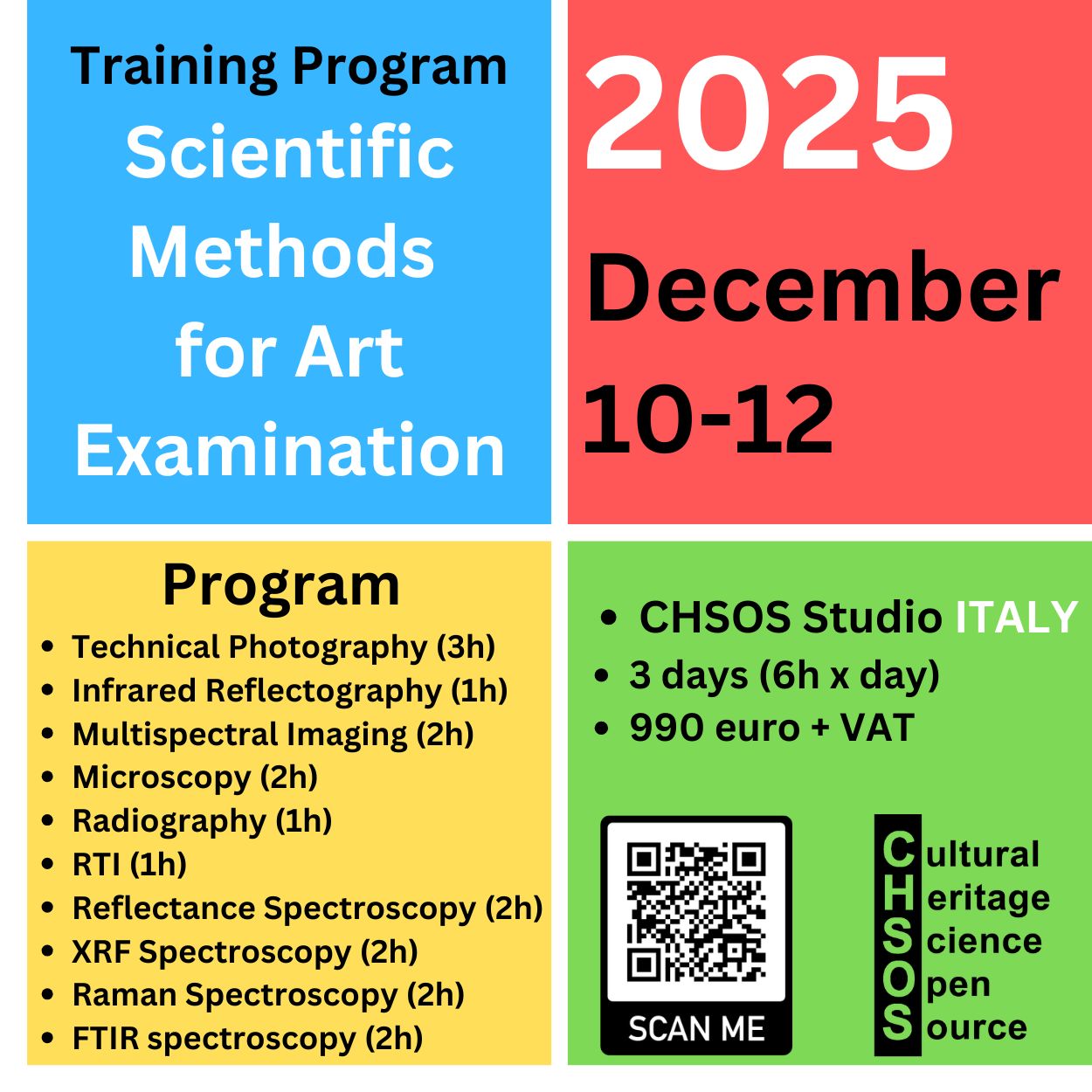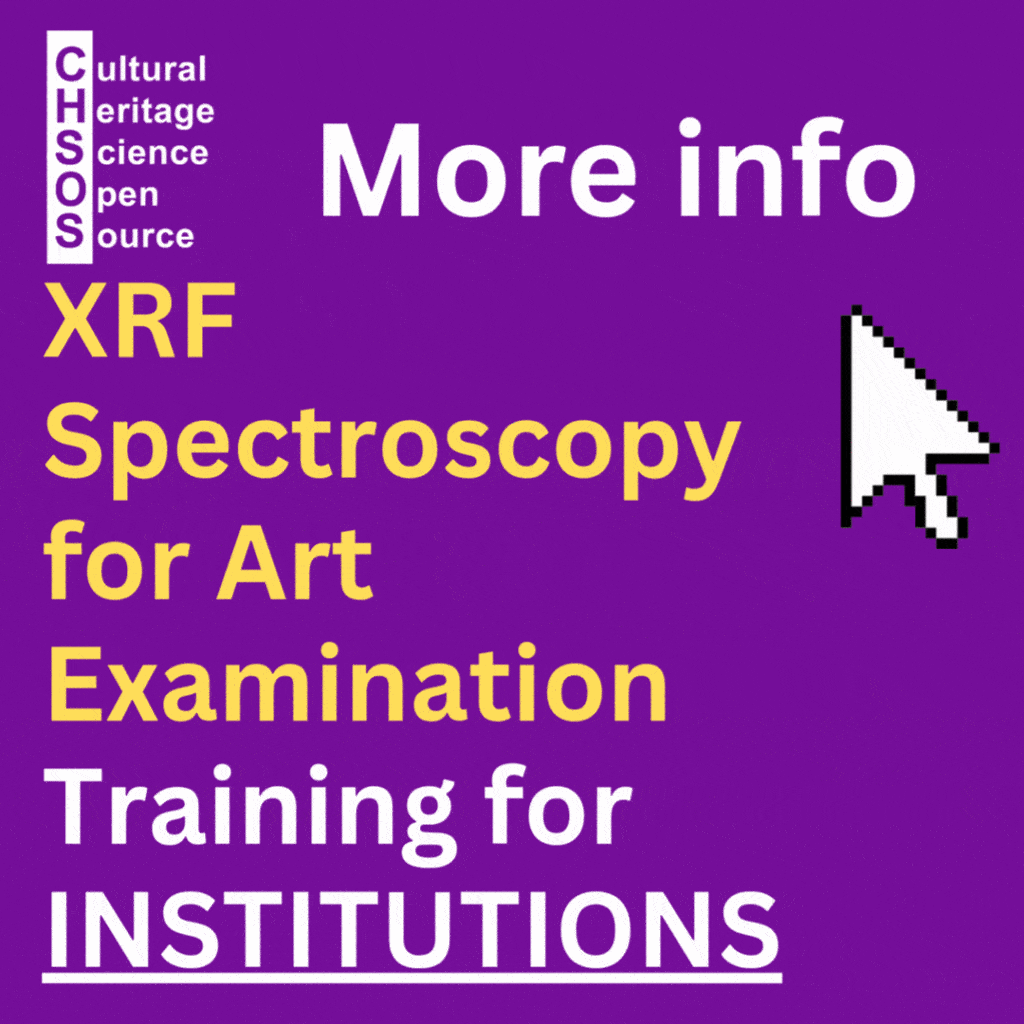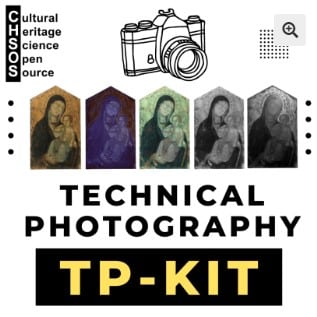Home » Test Artifacts » Technical Photography – stains
Task 2: stains
The goal of this test artifact is to evaluate which Technical Photography methods work best for recovering colors obscured by organic stains (such as coffee spills) and overwriting made with iron-gall ink or carbon-based ink.
The test consists of four paint swatches: azurite, yellow ochre, malachite, and vermilion. These pigments were chosen because they represent the full range of behaviors pigments can exhibit in the infrared region—from the most infrared-absorbent (malachite) to the least (yellow ochre), including pigments that are infrared-reflective (vermilion). Azurite also absorbs infrared radiation, but it becomes more transparent than malachite at longer infrared wavelengths.
CHSOS Test Artifacts – item #2

Technical Photography

While Reflected UV (UVR) is a useful tool for enhancing faded paints (see Task 1), it performs poorly when attempting to recover text obscured by stains. In this context, UV makes the organic stains even more opaque and therefore less effective. The best approach is infrared photography (IR): organic stains such as spilled coffee become transparent in the infrared, revealing the underlying paint much more clearly.
Thick iron-gall ink also becomes partially transparent in IR, but it remains relatively opaque; it fades further only when using the IR+ LIBERO filter. Carbon-based inks, however, remain opaque in all imaging methods, leaving little room for improvement.
It is important to note that while stains disappear in the infrared, the pigments themselves can also become highly transparent in this spectral region, which may make them harder to detect or interpret, as for vermilion.
While we could consider more advanced imaging approaches, such as multispectral imaging, the advantages of Technical Photography (TP) for this task are clear:
TP allows us to photograph and process a large number of items quickly — an essential feature when working with extensive objects such as multi-page illuminated manuscripts. The image editing required from the operator is also straightforward.
More complex techniques, like multispectral imaging, demand highly specialized equipment and personnel with advanced training, making them less practical for routine or high-volume documentation.








